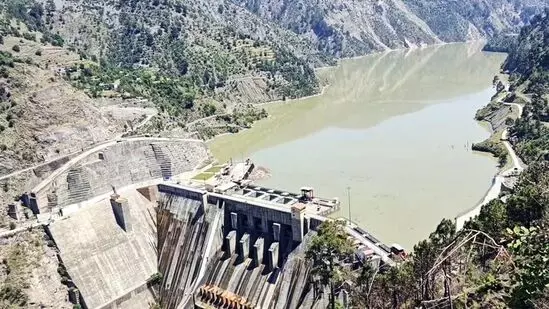India Halts Water Flow to Pakistan from Chenab River Dam

Amid rising political and military tensions, India has significantly reduced the flow of water to Pakistan from the Baglihar dam on the Chenab river and is now preparing to do the same from the Kishanganga dam on the Jhelum river. The move follows through on India’s firm stance to not let “a single drop” of water from the Indus system flow into Pakistan, following the suspension of the Indus Waters Treaty (IWT) last month.
Sources in the National Hydroelectric Power Corporation (NHPC) confirmed that India began large-scale de-silting operations at the Baglihar dam this weekend, which involved lowering the sluice gates—effectively cutting downstream flow to Pakistan by up to 90%. A similar shutdown is being planned for the Kishanganga project in Jammu and Kashmir’s Gurez valley, where water flow will be temporarily halted for maintenance.
“The gates of the Baglihar hydroelectric power project have been shut for reservoir cleaning and refilling. The process began on Saturday,” an NHPC official said.
The timing of India’s actions came just hours after Pakistan tested a surface-to-surface ballistic missile and India barred ships bearing the Pakistani flag from docking at its ports—a sign of escalating hostilities.
India had suspended its commitment to the Indus Waters Treaty—a six-decade-old water-sharing agreement with Pakistan—a day after a terrorist attack on April 22 killed dozens of tourists in Kashmir’s Pahalgam. Since then, India has been exploring ways to fully utilize the waters of the Indus system for its own citizens, officials said.
Top-level meetings have been held between the Jal Shakti Ministry and the Union Home Ministry to coordinate efforts to divert water resources toward northern Indian states. Nearly 50 engineers from NHPC have been deployed to Jammu and Kashmir to manage the ongoing operations.
In the broader context, India is also pushing ahead with four major hydroelectric projects on the Chenab river—Pakal Dul (1,000 MW), Kiru (624 MW), Kwar (540 MW), and Ratle (850 MW)—with expected completion timelines between 2027 and 2028. These projects, being executed through a joint venture between NHPC and the Jammu and Kashmir State Power Development Corporation (JKSPDC), are expected to collectively generate over 10,500 million units of electricity annually.
Progress on these projects has been steady: Pakal Dul is 66% complete, Kiru 55%, Kwar 19%, and Ratle 21%, with the latter’s coffer dam—a key structure—nearing completion. The Ratle project has especially picked up pace since 2023, an official said.
Pakistan has long raised objections over the design of both the Ratle and Kishanganga dams, claiming they violate the Indus Waters Treaty. In June 2024, a five-member Pakistani delegation and World Bank-appointed neutral expert Michel Lino visited the Ratle site for an inspection. Despite their concerns, India continues to push forward, citing national interest and growing domestic energy demands.
Jammu and Kashmir alone holds a hydropower potential of about 18,000 MW—of which only around 24% has been tapped. The Chenab basin accounts for over 60% of that potential, making it a key focus in India’s energy strategy.
With diplomatic relations between India and Pakistan already strained, this latest move to restrict water flow from the Indus rivers adds another layer of tension—one that could have far-reaching implications in the region.
